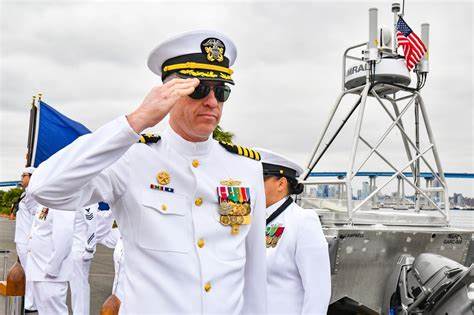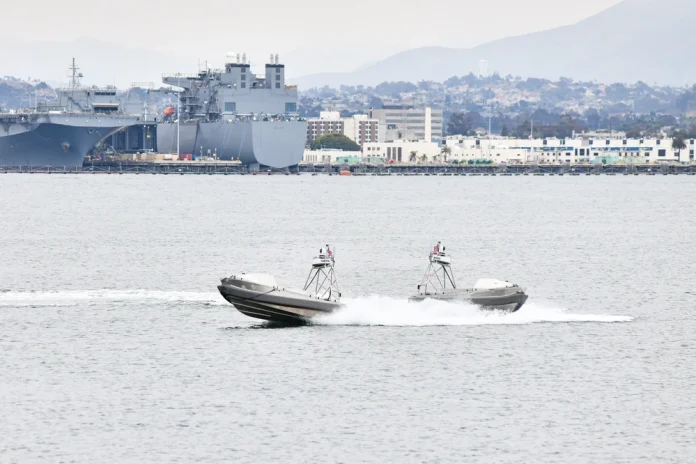
The U.S. Navy has officially ushered in a new era of maritime operations with the establishment of Unmanned Surface Vessel Squadron Three (USVRON Three), a groundbreaking move that sees the integration of small maritime drones into the force, marking a significant stride towards operationalizing advanced autonomous technology in naval warfare.

In the serene surroundings of Naval Amphibious Base Coronado, a pivotal moment unfolded on May 17 when Captain Derek Rader took command of the squadron, a unit poised to manage a “fleet” of Global Autonomous Reconnaissance Craft (GARC) drones.

These 16-foot unmanned surface vessels (USVs), developed by the Maritime Applied Physics Corporation, are crafted to support research, testing, and operations across various maritime domains, enhancing the Navy’s ability to adapt and evolve in response to emerging threats.

USVRON Three’s establishment is the most recent move in the sea service’s journey to building a hybrid fleet comprising manned and unmanned systems.

The squadron was formed as the Pentagon advanced its Replicator initiative, which strives to accelerate the programs and field thousands of autonomous systems across domains by August 2025 to aid the US armed forces in countering the Chinese military buildup.

Vice Admiral Brendan McLane, the commander of Naval Surface Forces U.S. Pacific Fleet, remarked during the ceremony, “The Navy is placing unmanned systems in the hands of 400 of our most talented warfighters to help integrate, scale, experiment, and employ these systems.”

It came roughly three months after the chief of naval operations, Adm. Lisa Franchetti, introduced a robotics warfare specialist general rating.

The squadron is also the first to incorporate the Navy’s newest rating—the robotics warfare (RW) specialist—endorsed by Chief of Naval Operations Admiral Lisa Franchetti.

RW Sailors will enable Robotic and Autonomous System operations and maintenance at the tactical edge.

According to a NAVADMIN declaration from Franchetti, RWs will serve as the subject matter specialists for mission autonomy, computer vision, navigation autonomy, data systems, AI, and machine learning on the Robotic and Autonomous System platforms. Those specialists will be part of the new squadron, per the service.

Squadron Three will serve under the Surface Development Group One (SURFDEVGRU One), commanded by Commodore Shea Thompson.

SURFDEVGRU One is responsible for the maintenance, training, and manning oversight for unmanned surface vessels (USV), Zumwalt-class guided missile destroyers, and the future USS Lyndon B. Johnson (DDG 1002).

“There are currently no boundaries, and we have an incredible opportunity to determine what right looks like within our sphere of influence,” said Thompson.

“The SURFDEVGRU One and USVRON Three teams are manned by like-minded surface warriors who are making considerable strides in validating small USV capability while laying out a clear path to achieving full operational capability by a timeframe that matters.”

Nickolas Guertin, the acquisition chief for the Department of the Navy, acknowledged during a congressional hearing that the Replicator initiative is not just about scaling production but ensuring that “our … [service members] can actually use this stuff in a reliable way when they need to in a fight.”
Relevant articles:
– U.S. Navy Establishes Unmanned Surface Vessel Squadron Three At Naval Amphibious Base Coronado, Marine Insight
– US Navy Establishes Unmanned Surface Vessel Squadron Three at Naval Am, Army Recognition
– Navy stands up new robo-ship squadron as Pentagon pursues Replicator systems, DefenseScoop
– Squadron established to oversee fleet of unmanned surface vessels, The Coronado News

